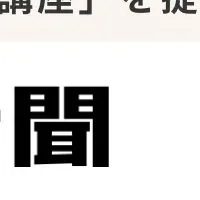
UNESCO Recognizes the Xixia Imperial Tombs as World Heritage Site Highlighting Cultural Fusion
The Recognition of Xixia Imperial Tombs as World Heritage
On July 11, 2025, during the 47th session of the UNESCO World Heritage Committee held in Paris, the Xixia Imperial Tombs were officially inscribed onto the World Heritage List. This momentous decision marked not only a notable achievement for the tombs themselves but also established them as the 60th World Heritage site from China. Situated at the foothills of the Helan Mountains in Yinchuan, within the Ningxia Hui Autonomous Region, these tombs are the most extensive, highest-ranking, and best-preserved archaeological remains from the Xixia Dynasty, which reigned from 1038 to 1227.
The heritage site is composed of nine royal mausoleums, 271 secondary graves, a significant architectural complex at the northern end, and 32 flood control facilities. Over nearly 50 years of excavation work, archaeologists have unearthed more than 7,100 exquisite artifacts, including a gilded bronze ox and a glazed Chiwen. These discoveries vividly reflect the characteristics of Xixia civilization.
UNESCO recognized the Xixia Imperial Tombs as an outstanding testament to the multicultural blend that shaped the region's heritage. The spatial arrangement, design philosophy, and architectural forms of the tombs are deeply rooted in the tomb system of the Tang (618-907) and Song (960-1279) dynasties, while also integrating Buddhist beliefs and ancient local ethnic customs. This combination fostered unique burial traditions and illustrated the dynasty's significant role in cultural and commercial exchanges along the Silk Road from the 11th to the 13th centuries.
The committee praised the extensive efforts and remarkable achievements of the Chinese government in preserving the cultural heritage of the Xixia Imperial Tombs. Since the designation of the site as a National Protection Unit for Cultural Relics in 1988, a comprehensive set of laws, regulations, and management systems has been instituted. Particularly since the year 2000, a collaborative effort with professional institutions has successfully led to 60 major reinforcement projects at the tombs. These initiatives have largely mitigated stability risks and surface erosion issues within the royal mausoleums and the key secondary graves.
Moreover, the removal of approximately 100,000 square meters of buildings and modern facilities within the heritage protection zone, coupled with the establishment of a robust monitoring and early-warning platform, has effectively ensured the authenticity and integrity of the site as well as the preservation of its surrounding environment.
International scholars emphasize that the Xixia Imperial Tombs serve as a vital evidence base for the study of ancient ethnic relations, architectural artistry, and burial traditions in China. Their successful inscription enriches the diversity of global heritage, emphasizing the need for continued efforts in the protection and study of our shared cultural legacies.
With this recognition, the Xixia Imperial Tombs now stand not just as relics of a bygone era, but as symbols of cultural fusion and historical significance in the narrative of human civilization. They invite both scholars and visitors alike to explore and reflect upon the intertwined histories that have shaped today's world.
Topics Other)










【About Using Articles】
You can freely use the title and article content by linking to the page where the article is posted.
※ Images cannot be used.
【About Links】
Links are free to use.